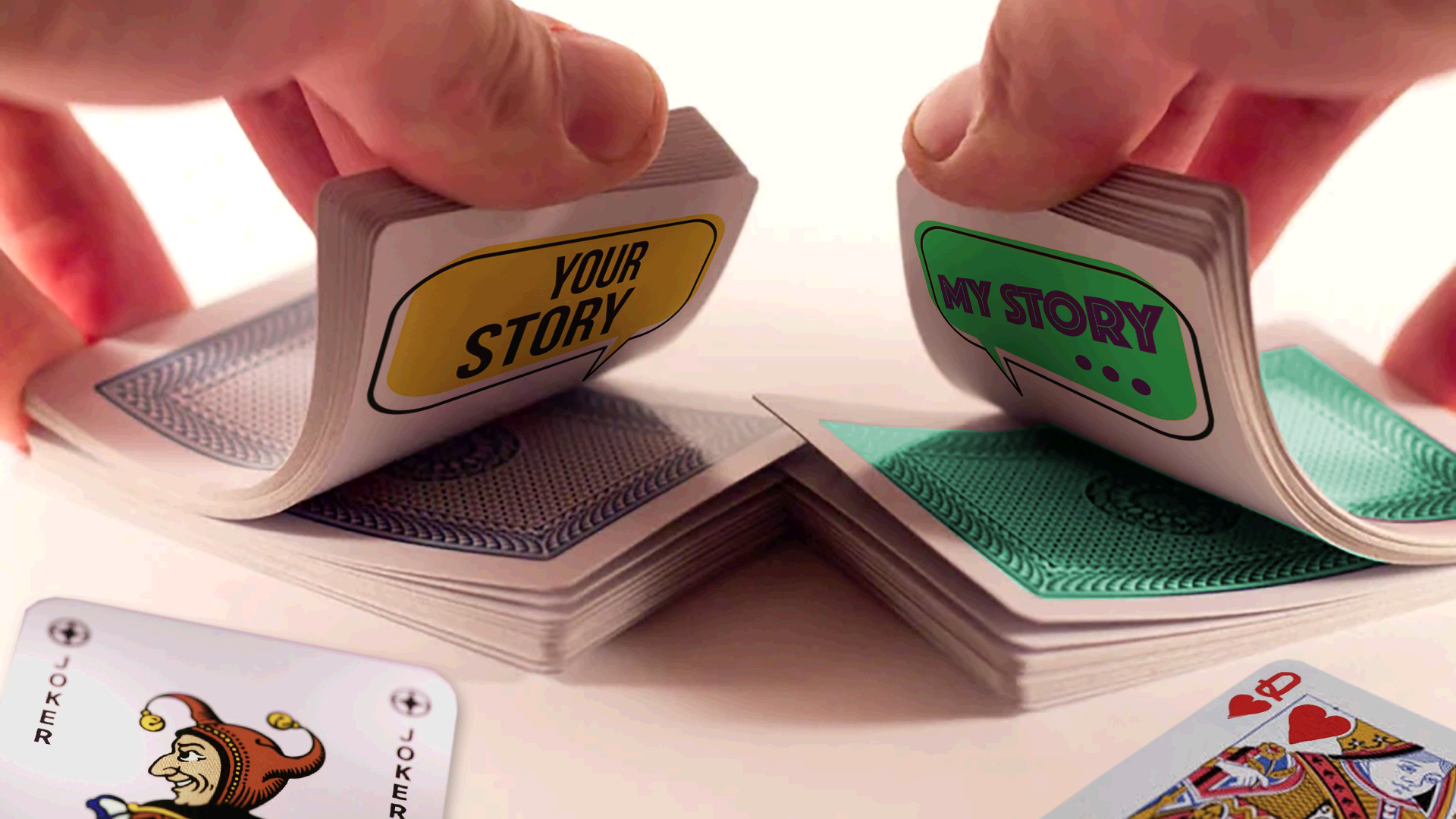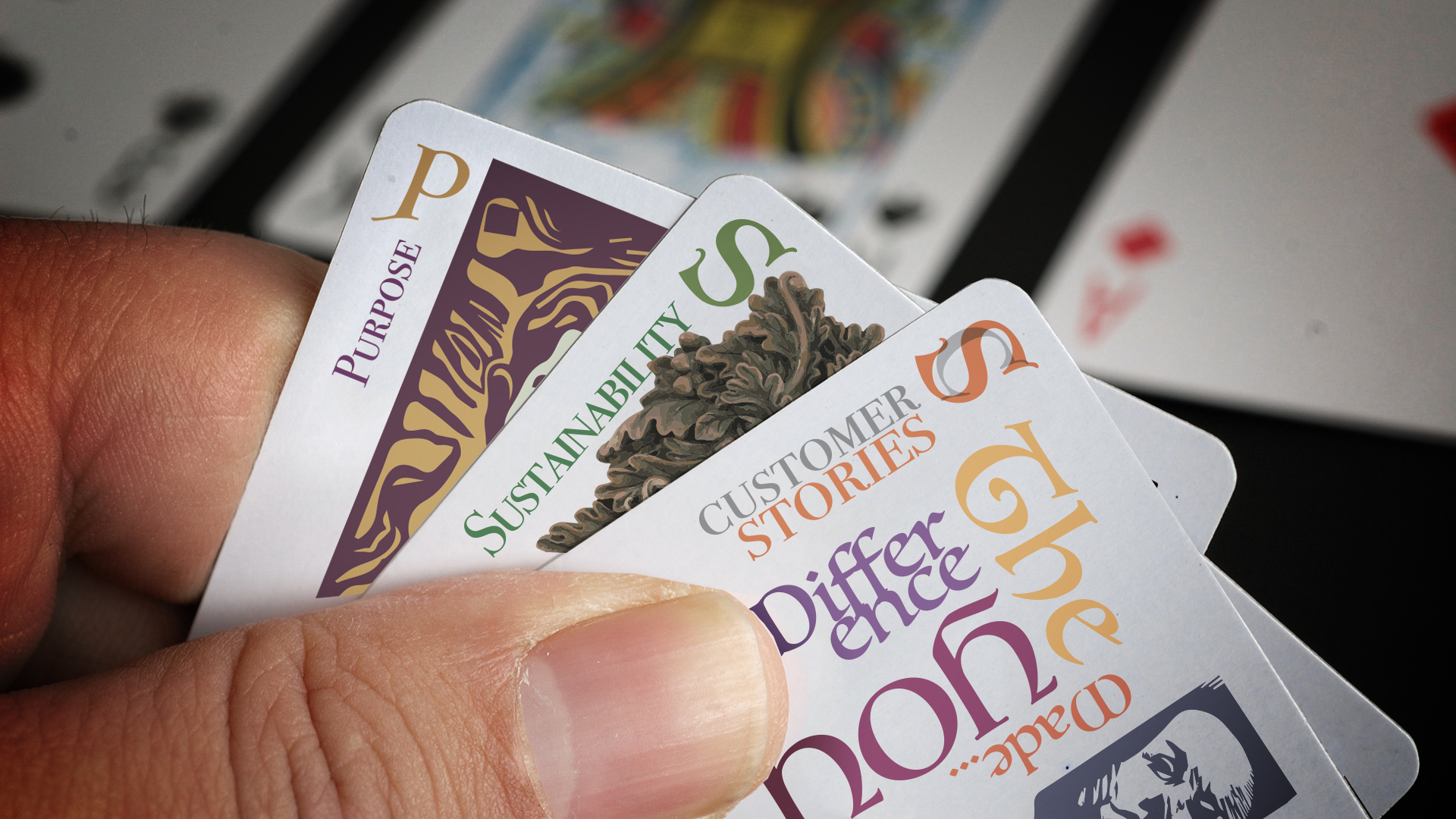Don’t you just love it when a report comes out that backs up your own experiences and instincts? The Superpowers Index, a unique perspective on the B2B buyer and the difference between winning and losing, is the largest ever systematic study of B2B buying behaviour globally, covering over 25,000 buying experiences over four years.
Its headline claim that better B2B buying experiences deliver top line impact might not sound like big news, but the wealth of detail it uncovers on the hows and whys for brands that want to improve the experiences they create is fascinating. We’re reading it through the lens of business storytelling and content creation, and there’s a lot of lovely nuance on why these matter so much in the buying journey.
Personal outweighs professional for the first time
Dentsu, the report authors, reveal that: “For years the B2B industry has pushed against the perception that B2B buyers are rational decision makers, driven primarily by business outcomes.”
"For the first time since we started Superpowers we see personal decision drivers outweigh the more functional professional decision drivers"
“But this year, for the first time since we started Superpowers we see personal decision drivers outweigh the more functional professional decision drivers in their overall importance in the B2B buyer journey. This should add fuel to the call for more creativity, storytelling and emotional resonance in B2B.”
Here’s our personal taken the key findings.
#1 Brand has never mattered more in B2B
Brand matters more than ever, because of an ongoing downturn in the effectiveness of traditional lead generation. The implication is that differentiated brand storytelling can fill the growing gap left at the ‘top of funnel’ thanks to ever-diminishing returns from mostly-generic, interruption-driven lead generation.
The report recommends that brands focus on differentiation, and specifically building trust and relevance. Brands can’t do that without addressing the challenges that the buying group encounters in their roles, every day. Some highlights that caught our eye:
// True thought leadership is highly valued, but brands do this mostly poorly
// A highly personalised offering matters hugely and brands are struggling to deliver
// Brands need to meet the needs of a range of different buyers.
We recently wrote The anatomy of a piece of sales enablement content that led to 150 leads. The TLDR for that is: Sales enablement content equips a salesperson to go on a journey with a potential buyer. The most effective sales enablement content is always:
- tailor-made to address the specific needs and challenges faced by buyers in a particular market
- laser focused on your sales team and your customers
- give sellers and buyers the tools and knowledge to navigate the sales cycle confidently
That particular piece of thought leadership was 16 intense weeks in the making, took input from a panel of experts and closely reflected the concerns of hundred of buyers. It was imbued with insight and answers, and also values and ethos. It is not easy, fast or cheap. But its impact is huge, and its shelf life long.
Interestingly, the research highlights a gap between marketers’ perceptions and reality here. They believe they are doing a sterling job, but buyers see brands as ‘swimming in a sea of sameness.’
#2 Customer Experience can shorten the sales cycle
Already complex B2B sales have become even more so. The number of people involved in buying decisions has increased. So has the time taken for a decision to be made – up an average 54 days from initial research to final decision since 2021, according to Dentsu. Partly that can be attributed to an increased number of brands considered during the buying journey – up 62% since 2021.
Of all the factors that can influence the length of the sales cycle, experience is the one that brands can really control. The evidence is that great experiences make a huge difference. As brand storytellers, we were stunned by the finding that 16 weeks could be sliced from the sales cycle if initial brand interaction is strong, and essential brand credentials are quickly established. In pursuit of that:
// See #1, above
// Really appreciate that personal considerations* now slightly outweigh professional ones (clearly you have to address both)
// Particularly impactful is a hybrid, in-person + digital experience from the earliest moments of the cycle
*The Superpowers Index cites personal decision drivers such as ‘Feels safe signing a contract’, ‘Aligns with (my) personal values’ and ‘Teaches me new skills and knowledge’. Highlighted professional decision drivers included ‘Are competitively priced’ and ‘products and services just work’, ‘variety and choice’.
We’ve had many conversations with founders at startups and scaleups – often recent graduates of a business incubator or accelerator scheme. They routinely express bemusement, even embarrassment, when we advise them to include their purpose, the difference they aim to make to people and society, in their business storytelling. It’s as if they’ve had the emotional colour bleached out of them. Advised to focus on a ‘USP’ – often product benefits and technical specifications – over and above articulating shared purpose and values, they get lost in that ‘sea of sameness’. Clearly, the answer isn’t to double down on a better USP!
#3 Personalised and adaptive go-to-market outperforms generic ‘lead generation’
Delivering personalised experiences to an increasing number of buyers, often with very different needs, over a sustained period is the new name of the game.
// Creativity and storytelling are the keys to connecting with buyers’ emotional drivers, and therefore essential to stand out from the crowd
// Brands that do this well then encounter the challenge of scaling it to ever larger numbers of buyers
// Technology must help here, and it can. For instance by personalising that initial approach, carefully curating a choice of media and helping identify the most effective mix from a range of content types.
In other words, highly relevant and valuable content comes first. Then the technology does what it does best – predicting and inferring, curating, sequencing, responding.
"Wouldn't it be great if marketing platforms practised what they preached here?"
In our opinion, it would be great if platforms practised what they preached here. Some can be praised for taking a research lead encouraging a more personalised, high value approach to content. But maybe let themselves down with their ‘Write better with AI’ prompt at the start of each new creative effort?
Brands can step up here, and that almost certainly means a hybrid personal + digital approach. A website and digital experience that makes the early research and ‘getting to know you’ stage of process easier will help. And once they’ve found you, engaging everyone involved in the buying decision in meaningful conversations where you dig deeply into their individual needs is strategically important. Asking good questions is something your sales team is perfectly poised to do, and that’s the kind of attention that buyers would welcome.
Dentsu again: “B2B buyers want experiences that reflect their needs. “I would like business suppliers to spend more time understanding me and how it can solve the day-to-day problems I face at work.”
You need both to satisfy your buyers’ professional and emotional needs on a long buying journey, and the digital experience is key to achieving that. Design your website around your buyer’s questions and key buyer journeys, make product and services information clear and logical. Relevant information, transparent pricing, competitor comparisons; there’s a lot that a combination of great UX and being upfront can do to tick the professional boxes.
When it comes to the softer, intangible (but ultimately more deep rooted) stuff, like building trust, creating a feeling of safety, teaching something new, and demonstrating value, these are all places where storytelling and valuable content creation can be a brand’s best friend.
The Superpowers Index report shows a strong correlation between a better buying experience and commercial impact:
- Their sales cycles are 27% shorter on average
- They are almost twice as likely to be adopted for further products and services (41% vs 23% for other brands)
- They receive much higher NPS scores (+83 vs +23 for other brands)
- They are nearly three times as likely to see further spend from customers in the future (33% vs 13% for other brands)
Get all the moving parts right in this long game, and the rewards are high.






What do you think?